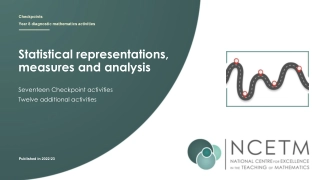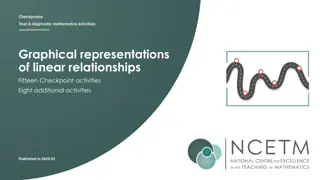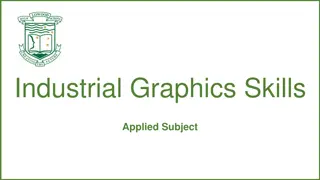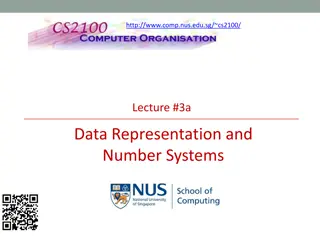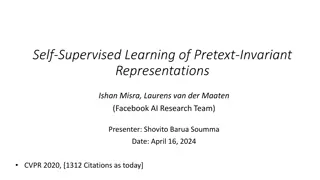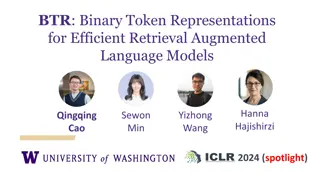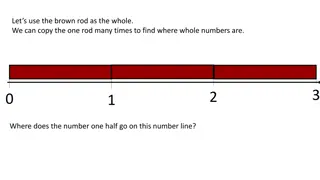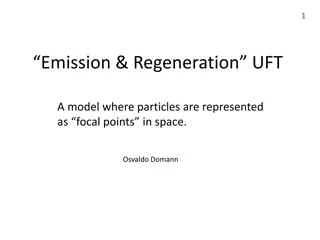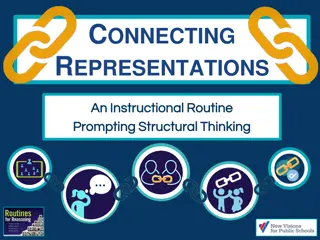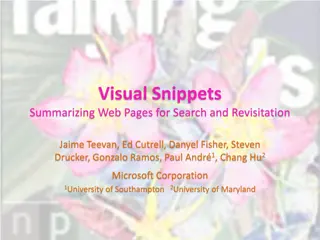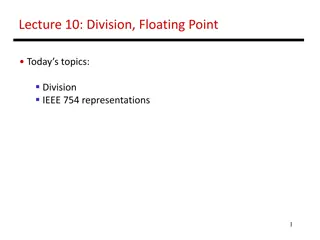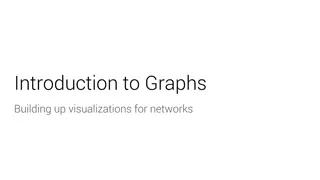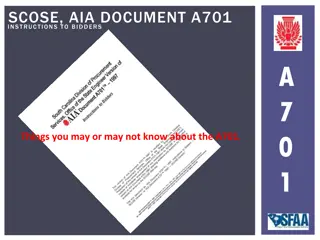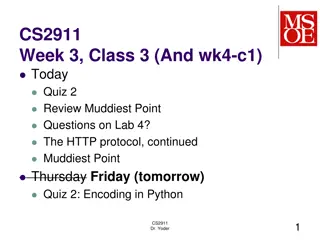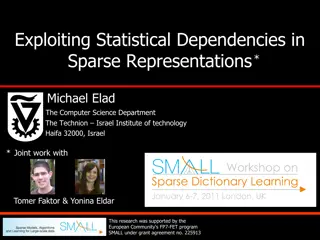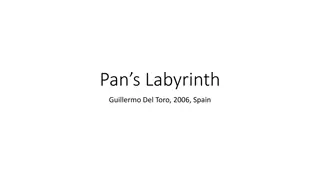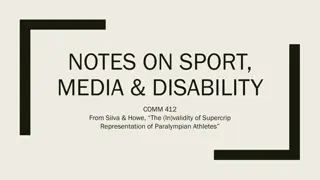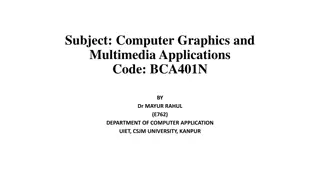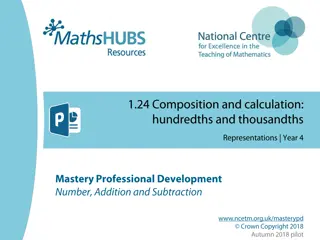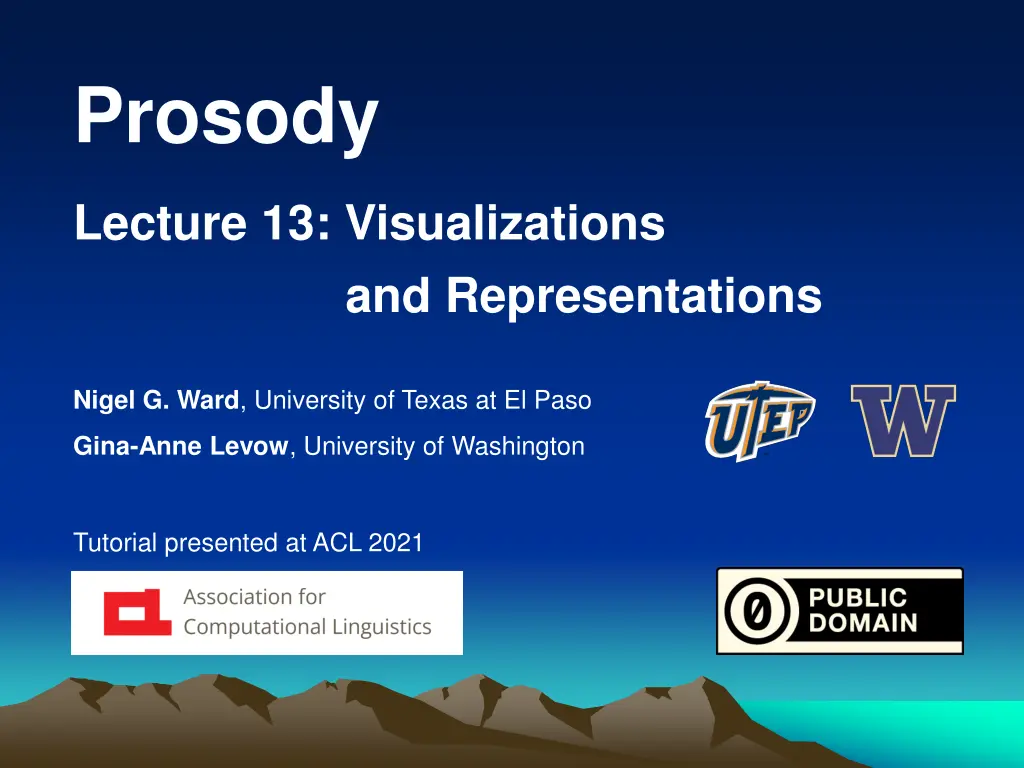
Prosody Visualizations and Representations Tutorial Highlights
Explore visualizations and representations in prosody analysis, including raw F0 and intensity data, F0 contours, pitch turning points, and more. Learn about different strategies for extracting salient features and utilizing tadpole notation in understanding learning styles.
Download Presentation

Please find below an Image/Link to download the presentation.
The content on the website is provided AS IS for your information and personal use only. It may not be sold, licensed, or shared on other websites without obtaining consent from the author. If you encounter any issues during the download, it is possible that the publisher has removed the file from their server.
You are allowed to download the files provided on this website for personal or commercial use, subject to the condition that they are used lawfully. All files are the property of their respective owners.
The content on the website is provided AS IS for your information and personal use only. It may not be sold, licensed, or shared on other websites without obtaining consent from the author.
E N D
Presentation Transcript
Prosody Lecture 13: Visualizations and Representations Nigel G. Ward, University of Texas at El Paso Gina-Anne Levow, University of Washington Tutorial presented at ACL 2021
Smoothed F0 Contours plus interpolation
Average Pitch Levels is not going to help talking about learning styles
Average Pitch Levels talking about learning styles is not going to help
Two Strategies Perceptually Salient Things Tidy things up Extract things Little wiggles* Pitch turning points Gaps Average pitch per syllable Pitch range Pitch peak shapes Overall contours Slope, final slope . . . *Hopefully correcting for microprosody effects
Tadpole Notation talking about learning styles is not going to help Niebuhr, Alm, et al, 2017
Tadpole Notation talking about learning styles is not going to help Niebuhr, Alm, et al, 2017
ToBI HH* H* L* L*H L* H* L-H% talking about learning styles is not going to help Assumptions Pitch height is categorical Only some syllables have targets
ToBI HH* H* L* L*H L* H* L-H% talking about learning styles is not going to help Assumptions Pitch height is categorical Only some syllables have targets
Cautions Auditory and visual perception may differ Intonation alone may mislead Assumptions may be language-inappropriate Choose carefully a representation for your purpose
Contents Introduction 10.Tone and Stress Production, Perception 11. Sequencing and Connecting Classic Linguistic Prosody 12. Prosodic Structures Technology and Techniques 13. Representations Para. & Prag. Functions Speech Synthesis and Dialog Perspectives
Contents Introduction Production, Perception 14. Frame-Level Features 15. Mid-Level Features 16. Machine Learning 17. Speech Recognition Classic Linguistic Prosody Technology and Techniques Para. & Prag. Functions Speech Synthesis and Dialog Perspectives
ToBI Inspired by the IPA Has a pitch-shape inventory Specifies only targets Categorical Works best for professional speech (Silverman, Beckman et al. 1992)
What do People Perceive? Candidates for significant prosodic events include: Pitch turning points Pitch peak shapes Overall contours Average pitch per syllable Slope final slope Pitch range standard deviation interquartile range . . .
Intonational Phonology: ToBI and English ToBI Tones and Break Indices (Pierrehumbert,1980) Combined model of prominence and phrasing Analogous models created for several other languages J-ToBI, G-ToBI, K-ToBI, C-ToBI Model comprising four tiers Orthographic tier: word transcription Tonal tier: pitch accent, boundary tone transcription Break-index tier: break transcription Miscellaneous tier: other comments and notes
Break Indices Indicate degree of disjuncture at boundary 0: no (or cliticized) boundary (~ Tseng s SYL) 1: typical word boundary (~Tseng PW) 3: Intermediate phrase boundary (~Tseng PPh) Often coincides with syntactic phrase 4: Intonational phrase boundary (~Tseng BG) Often coincides with full clause, sentence boundary (Relatively) Predictable from pause duration
ToBI Tonal Components Modeled as H(igh) or L(ow) pitch targets Pitch accents Phrase accents Boundary tones
ToBI Pitch Accents In American English: Prominence * marks tone aligned with stressed syllable in word H*: high pitch accent, most common prominence L*: low L+H*: low rising to high on stressed syllable L*+H: low on stressed syllable !H*: Downstepped high
Phrase Accents & Boundary Tones Phrase accents: H-,L- Extend from last pitch accent to end of intermediate phrase Boundary tones: H%, L% End intonational phrases Common tone sequences and meanings: L-L%: Final fall, completed thought, declarative H-H%: High rise, typical of yes/no questions L-H%: Continuation rise , not finished speaking H-L%: may mark implied question
ToBI Impacts Formal framework for intonational phonology Adapted for range of languages Work on linking tone patterns to meaning Computational applications: Categorical inventory for continuous prosody Inventory for prediction of prosodic labels Recognition, synthesis Representation for factored models in ASR
Beyond ToBI Limitations: Phonological model, elides phonetic variation Fine-grained labels difficult even for experts Intermediate representation; may prefer E2E Alternate models: Stem-ML, Tilt, MOMEL, IntSint, PENTA RaP, POLAR
Prosodic Labeling Exercise Prominence Mark each acoustically salient word Phrasing Mark each boundary with '|' I really don't know I think in today's world what they call the nineties that uh it's like everything is changed
Prosodic Labeling Exercise Prominence Mark each acoustically salient word Phrasing Mark each boundary with '|' i really don't know | i think | in today's world | what they call the nineties | that | uh it's like everything is changed |

